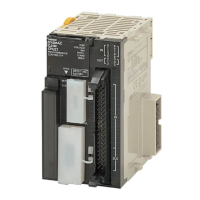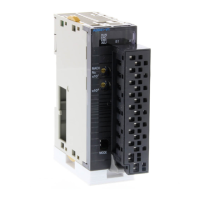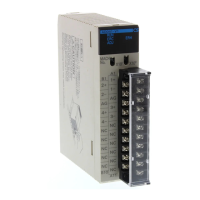215
If multiple SEND(90)/RECV(98) operations are used, the following flags must
be used to ensure that any previous operation has completed before attempt-
ing further send/receive SEND(90)/RECV(98) operations
SR Flag Functions
SEND(90)/RECV(98)
Enable Flags
(SR 25201, SR 25204)
OFF during SEND(90)/RECV(98) execution (including
command response processing). Do not start a
SEND(90)/RECV(98) operation unless this flag is ON.
SEND(90)/RECV(98)
Error Flags
(SR 25200, SR 25203)
OFF following normal completion of SEND/RECV (i.e.,
after reception of response signal)
ON after an unsuccessful SEND(90)/RECV(98) attempt.
Error status is maintained until the next
SEND(90)/RECV(98) operation.
Error types:
Time-out error (command/response time greater than 1
second)
Transmission data errors
Timing
Instruction
received
Transmission
completes
normally
Instruction
received
Transmission
error
Instruction
received
Successful
send/receive
execution
Send/receive
error
Data is transmitted for SEND(90) and RECV(98) for all PCs when
SEND(90)/RECV(98) is executed. Final processing for transmissions/recep-
tions is performed during servicing of peripheral devices and Link Units.
To ensure successful SEND(90)/RECV(98) operations, your program must
use the SEND(90)/RECV(98) Enable Flags and SEND(90)/RECV(98) Error
Flags to confirm that execution is possible. The following program shows one
example of how to do this for a SYSMAC NET Link System.
Data Processing for
SEND(90)/RECV(98)
Programming Example:
Multiple
SEND(90)/RECV(98)
SYSMAC NET Link/SYSMAC LINK Instructions Section 5-23

